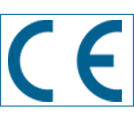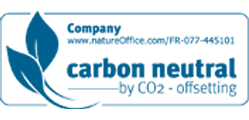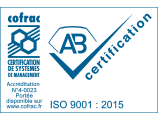
The University Medical Centre Erasmus is based in Rotterdam, Netherlands. As the second largest hospital in Netherlands – and the largest UMC – Erasmus MC serves a catchment area including Rotterdam, Zeeland and the South West Netherlands. The hospital is affiliated with the University and is a Centre of Excellence for oncology diagnostics.
A critical aspects of the histopathology workflow are the archiving of patient blocks, and retrieval for re-work and further testing. As cancer diagnostics and treatment methods improve and the average age of the population increases, so too does the quantity of blocks being archived year on year. Central to the histology process at Erasmus MC is the Dreampath Fina block archiving system. The system is helping to revolutionise their archiving and retrieval processes while optimising safety and traceability of precious patient blocks.
Profile
Profile Erasmus UMC is affiliated to Erasmus University and as a central research facility it also incorporates a 24-floor research tower. It is a Centre of Excellence for cancer diagnostics in the Netherlands and, in 2016, they processed over 30,000 surgical requests. Their mission is a commitment to a healthy population and excellence in healthcare through research and education. With a desire to be at the forefront of innovation, technology and healthcare, the team at Erasmus MC share a common goal with Dreampath – achieving positive patient outcomes.
They have a team of forty technicians of varying grades from Basic Analyst through to Supervising Analyst, and covering all aspects of the histology, cytology and immunopathology processing. The lab is very efficient, runs smoothly, and typically hits their targets for turn-around time – vital in ensuring timely delivery of patient results and necessary treatment.
As part of their process improvements, last year the team at Erasmus MC carried out a study of their archiving. They calculated that approximately 0.5% of the archived cassettes were in the wrong place or lost. As a laboratory with an annual generation of around 100,000 blocks this equated to around 500 important papatient specimens. Difficulty locating blocks required for further work was also delaying testing and ultimately delaying patient treatment. Additionally, archiving at the end of the day was proving to be extremely time consuming, and blocks were piling up in the lab due to lack of resource for this onerous but important task.
Ian Overduin is Research & Development and Project Manager and is involved with development and execution of new projects and strategies to improve processes at Erasmus MC. After carrying out the study, they realised that improvements needed to be made and discussions took place with Dreampath about how the Fina block archiving system could benefit them. Their laboratory already utilised the PrintMate™ cassette printers from Dreampath for 2D barcoding of cassettes, as well as SlideMate AS slide printers from Dreampath – the Fina was an obvious choice for helping them to optimise their archiving processes and improve security. As they utilise the Sympathy LIMS (Laboratory Information Management) system it was important that any new install be compatible with this, in order to ensure maximum traceability and efficiency.
Fina block archiving system – traceability, fully automated
The Fina system is a revolution in archiving, management, storage and retrieval of paraffin blocks. Sectioned blocks are simply placed into a barcoded plastic tray which is inserted into the scanner when it is full or at the end of a session. Every cassette is scanned and photographed and its location is stored in the database. Specially designed, robust cabinets are then used to store the trays, and up to three user-definable locations can be created such as “laboratory”,“store room” or “basement”. As the blocks are barcodedand locations recorded, they do not need to be sequenced and placed into the tray in order – another very time consuming aspect of manual archiving.
Retrieval of required blocks for re-work is very simple. A picking list can be quickly generated in the system, and then sent to the personal digital assistant (PDA) which is used to scan out the required cassettes. This minimises the risk of retrieving the incorrect block which could otherwise lead to patient error. Upon scanning out the cassette, the identity of the requesting pathologist is required as well as a reason for the request and an approximate date for return. Importantly, reports can be run as required to identify those cassettes which are outstanding. A further security aspect of the Fina system is that there is no outward identifier of the cabinets and trays.
This prevents unauthorised removal of blocks as it is not possible without access to the database in order to identify the location of specific blocks.
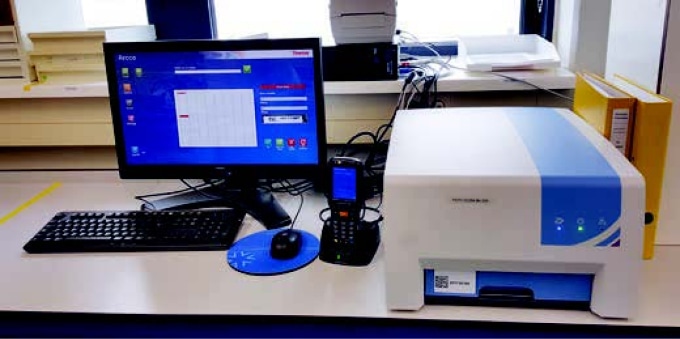
Installation of Fina at Erasmus MC
Once they had made the decision to purchase an Fina system, the team at Erasmus MC worked closely with Dreampath applications staff in order to ensure that the installation ran as smoothly as possible. Ian commented, “The preparation was very important, and someone from Dreampath was always here to assist us.”
The laboratory team were also consulted at every step, and presentations given to them to explain the system and the associated benefits it could bring. They were also involved in decision making processes which empowered them and gained their commitment to the Fina system.
Remco de Louw is one of the Laboratory Technicians at Erasmus UMC, and also assists with IT tasks for the Laboratory. As a Lean Six Sigma Yellow Belt, Remco has also been involved in a number of important initiatives to improve processes at Erasmus MC. Most recently, he carried out a Kanban for stock replenishment. Remco commented, “We try to keep everything lean and minimise waste.” Along with Ian, Remco was instrumental in ensuring smooth install and commissioning of the Fina system as well as training of the other staff prior to the launch.
Having a laboratory technician who also understands the implications of introducing new IT systems has been a valuable asset to the team at Erasmus MC. When the time came for launch everything ran very smoothly, and they actually started using the system two days early! Remco commented, “I had to validate the system for our paperwork, but after that we just started using it! I think it was one day at the end of December. The transition was immediate – right from the start, part of the list was in the old system and part in the new system. Retrieved blocks were immediately rearchived using the Fina.”
Storage of Trays at Erasmus MC
The storage of archived blocks at Erasmus MC is broken down into three locations; they are stored in the lab for the first four months, after which they are moved to the store room.
After around 1 to 1.5 years they will then be moved to the basement archive for long term storage. The Fina system easily enables relocation by scanning the tray and simply moving the location.
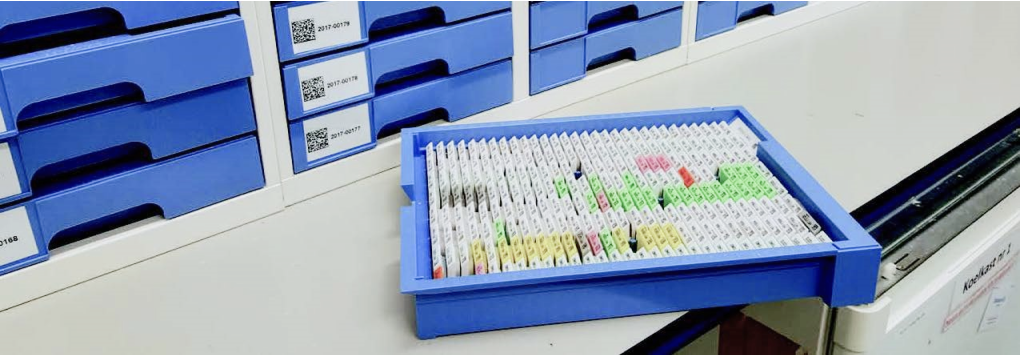
Improving Safety and Security
A key feature of the Fina system is logging of the exact location of every block within the particular tray, cabinet and storage location. At any time, a particular specimen can be very quickly located for retrieval – vital if an urgent recall is needed which could impact on patient treatment. The team at Erasmus MC now have the confidence in always retrieving the correct block in a timely manner. Gert-Jan is a Laboratory Assistant at Erasmus MC and commented, “The old system worked, manually archiving the blocks – until one was put in the wrong place and we would spend a long time looking for it. Also, before Fina when we were looking for a block but didn’t know if it was actually archived. Now we know exactly where to look – it is already a time saving.”
In order to maximise traceability, every tray is scanned at least once per day until it is full so that everything is updated in the system. This ensures that if special cases are required quickly they can be very easily accessed. A simple ticketing system is then used in the tray so that it is very quickly apparent where they were up to at the point when it was scanned. Discussing this simple archiving technique, Remco commented, “We know how many new blocks there are. If you see a lot of new blocks then you know to scan the tray again.”
Another vital aspect of the Fina system is the “3+3 Security of Data”. There is triple data back-up within the scanner, computer and also on the facility network. Universally readable back-up systems mean that there would never be an issue of losing location data. There is also a triple tier security level – comprising User, Manager and Administrator, ensuring no unauthorised access. Discussing the improvements in the process, Ian Overduin commented, “One of the good things with Fina is that you have to scan the block out, so you always know that you have the right one. Also, it is good that nobody can remove them without permission.”
Time Savings at Erasmus MC
Since launching the Fina system at Erasmus MC, they have found that they now have far fewer lost blocks and also spend much less time looking for them. Ian commented, “In the morning we always have a lot of specimens to retrieve as the Pathologists often work late and will leave a list for the following morning. We can now just send the list to the Fina and retrieve them quickly. It’s a big time saving”. Remco added, “It is very nice – you just look up all of the blocks in the system. Previously, the first list was pretty much never retrieved before 9am, but now it is done long before that!”.
Conclusions
Since launching the Fina block archiving system, the team have all noticed the improvements to the block traceability, workflow and benefits of the time savings. Remco commented, “All of the team are very enthusiastic about Fina. The transition was immediate and it is very easy to use.” Historically, manually archiving blocks meant that they had to be in numerical order; however as the Fina system logs the exact location of every cassette, this manual ordering is no longer required.
Remco again commented, “While their initial reaction was “how am I going to find the block”, that isn’t a problem now. Not having to put them in the right order made people sceptical at first, but I think that within one to two weeks that was gone. They all liked it, and it was actually faster than normal for implementing something new.”
The workflow improvements at Erasmus MC have initially demonstrated time savings of approximately 0.25 (full time equivalent) members of staff. In further advancement in technology, their plan is that staff released by this investment will be used towards the plan of progressing to digital pathology.
They have also recognised that research is able to benefit from being able to access required blocks far more quickly and with more traceability. Pathologists, Research Scientists, Clinicians and importantly patients have a shared interest in this optimised traceability of paraffin blocks in order to enable complete and timely diagnosis – helped by the Dreampath archiving system.

